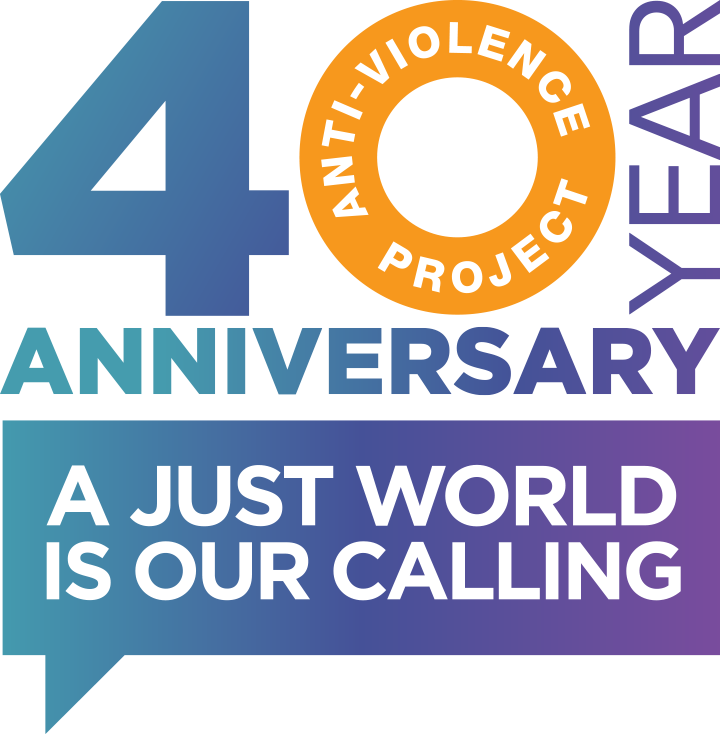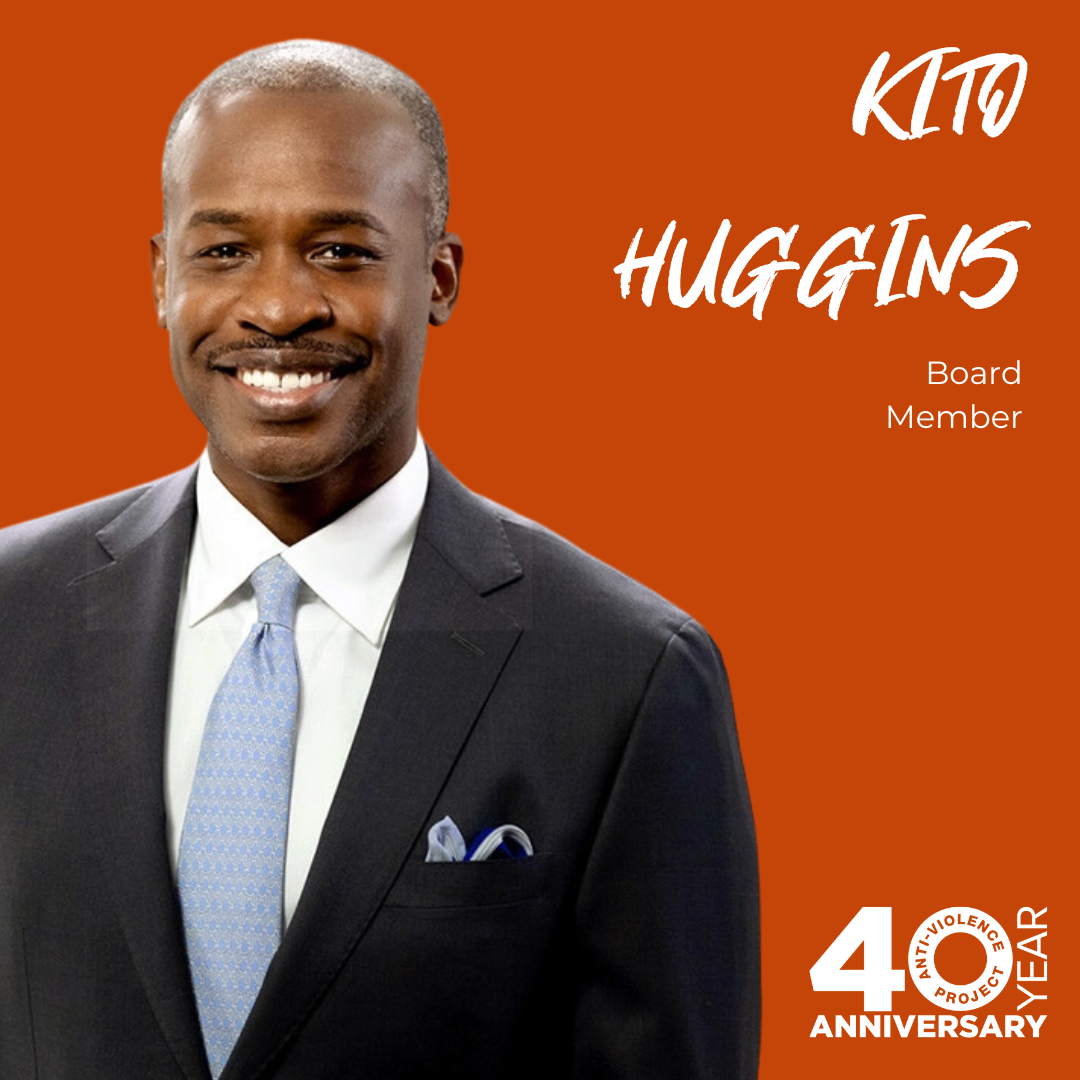
This interview has been shortened and condensed for clarity.
Sharon Stapel served AVP for seven years as its Executive Director, steering the organization through the recession of 2008 and growing programs, including overseeing the launch of AVP’s Legal Project in 2013 and our programming geared to serve transgender and gender non-conforming people. A lawyer, activist, and professor, Sharon was a leader in the fight for an LGBTQ-inclusive reauthorization of the Violence Against Women Act (VAWA). This achievement earned Stapel recognition by former President Obama and receipt of the American Bar Association’s 20/20 Vision Awards.
Currently, Stapel is the Executive Director of Legal Hand, an organization that provides free legal information, assistance, and referrals around issues related to employment, housing, immigration, domestic violence, and more. Sharon lives in Brooklyn with her wife and children.
How did you first engage with AVP?
Somewhere in the late ’90s early 2000’s. I was a lawyer at the Legal Aid Society, where I had created their domestic violence project. As a part of the project, we worked with underrepresented communities, and so I wanted to make sure we were working with queer communities. AVP was the only game in town in terms of finding folks experiencing domestic violence, intimate partner violence, and those identified as LGBTQ, so I reached out. I started representing AVP’s clients and did that for ten years or so. Then I started engaging in policy work with AVP.
We worked together to change the Family Court Act to include queer survivors of violence so that they could get civil orders of protection. It was really a time before the law protected queer folks. Part of what we were doing is finding the places in the law that could protect folks, like administrative hearings or housing court cases or through non-discrimination protection where it existed. And then simultaneously trying to shape systems so that they would protect LGBTQ folks.
What aspects of AVP’s work do you feel are the most impactful to the communities AVP serves?
I think it depends on who in the community you ask. For some folks, having AVP as a community, having services, and having people who understand and believe you is the difference between life or death.
When I got to AVP, Barack Obama had just been elected, and so we were finally able to apply for federal funding, and we applied for AVP to have a legal department. We got funded and hired Virginia Goggin, who has done a phenomenal job expanding AVP’s work. There are so many needs legally, but also, people need to be seen and believed and fought for.
Virginia and her team do such a good job at fighting for people within systems that are not friendly or welcoming, even if they are nominally inclusive. It’s made a huge difference to the folks who are able to be in a place like AVP where they can have their emotional, social, legal needs taken care of all at the same time because you can’t actually parse those things out in your person. And so, if you’re forced to do that in different systems or services in order to get what you need, you become less whole. AVP and the program between Legal Services and Client Services was created so that people could stay whole, if that was possible.
From my ED perspective, the policy work is so important because if the systems don’t support us, if the systems don’t see us, then there’s very little that we can do on an individual basis. We can still create that community, we can still believe people, we can still embrace folks, but we can’t change the roots of what they’re experiencing. And so I think in my time as ED, the policy work was the stuff that felt like it would have the biggest impact on the most number of people. It’s not the thing that makes your heart do the work, but it’s the thing that makes your head do the work.
What is the work you’re most proud of?
The work that I’m most proud of is the work we did in transgender and gender non-conforming communities. It started because we hired a community organizer, who was a trans woman named Jennifer.
Jennifer said, there’s all this stuff going on in the trans community you guys aren’t paying any attention to. And I said, “Okay, tell me what it is. What should we do? What’s going on?” And she did for a while. Then she came to me, and she’s like, “So I can’t be the only person who’s telling you and doing the work.” And I was like, “Oh, sh*t, of course, you can’t be. That was really dumb of me not to see that from the beginning.” And we started really actively working with TGNC communities, intentionally hiring TGNC staff, promoting TGNC staff, giving folks autonomy to decide where they needed to be, what they needed to work on, and what was important. When I got to AVP, I think there was one person who identified as trans that worked there. By the time I left, I think there were half a dozen, maybe more. There certainly were more than half a dozen in the arc of my time there.
I think that organizations like AVP have to use the organizational, institutional power they have to speak on behalf of folks who are being ignored. But then they also have to be able to step back and say, “Okay, this door is now open, you guys walk through. We’re going to be back here if you need us.” Right? I think we intentionally saw our role as creating the space we could create with the institutional power that we had and then stepping back and saying, “Okay, we’re not the boss of this. We don’t know the solutions to this. We’re going to listen to TGNC people about what they need.” And it was the work that I loved the most.
Can you speak to how your work at AVP and VAWA were connected?
As representatives of the National Coalition of Anti-Volence Programs (NCAVP), Terra Slavin from LA LGBT Center and I went to the National Task Force on Domestic and Sexual Violence, who were advocating for VAWA’s reauthorization, which kept getting pushed off. We aligned ourselves with the communities of color group, the immigrant group, and the Native group early on because we saw strength in numbers. There were some really interesting tensions among us, but we formed that alliance, which was tested constantly for years. Senate staffers tried to split up the alliance by speaking to us one by one, asking queer groups to throw immigrant groups under the bus, but we said, “No. We talk to each other.” We were incredibly strategic, but I’ll tell you–I did not actually believe that we would win until the last vote was cast. And then we did it. Right? And we got to be on the stage when President Obama signed it into law.
And honestly, there is an analysis of VAWA that exactly tracks the analysis of the criminal justice system–I mean, it’s the Department of Justice. There are all of the knee jerk responses about what works and funding cops and funding DAs and all that. And also, the money is the difference between being able to do something in your community or not doing something in your community, right? And the non-discrimination protections force domestic violence shelters to accept men when they would only be women shelters or to accept trans and gender non conforming people. There’s all of that stuff too.
How has AVP expanded your definition of justice?
Having the organization itself as a place where people could go and tell their stories, and then being a part of that, representing AVP’s clients, as the Executive Director, you can’t help but shift the way you think about the world. One of the things that AVP does well is listen and believe. As a lawyer… you can represent someone and not believe what they’re saying and still do your best to get them what they need. What AVP both taught me and allowed me to have is the ability to believe people unconditionally. And then, with that information, figure out how to try and approach or address or sometimes solve the problems that they were coming to us with.




